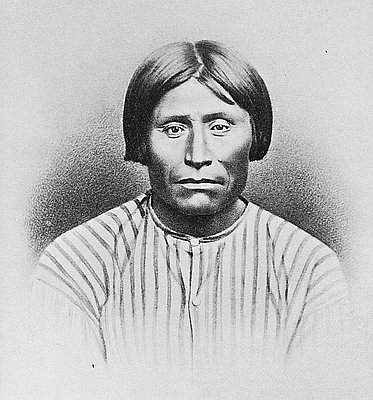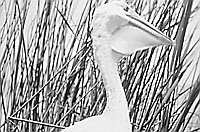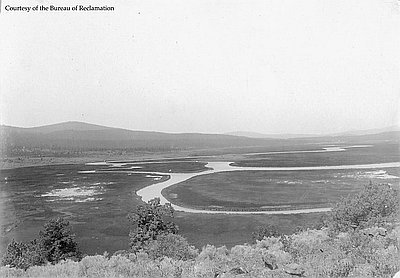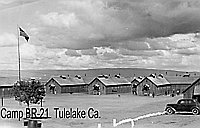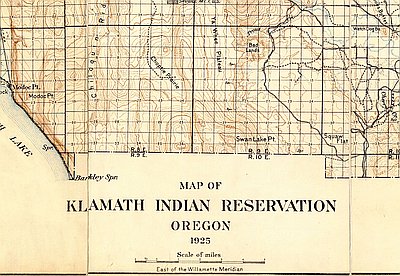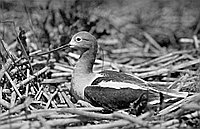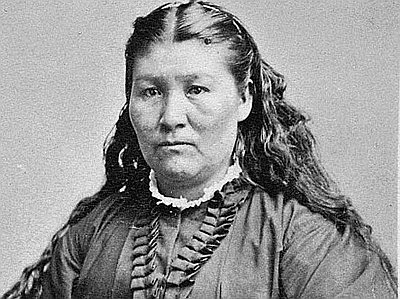Cattlemen and Indians
Between winter and fall in the Upper Basin country of lakes and marshlands, great quantities of water evaporate into the high desert skies. In the nineteenth century, before Klamath Project engineers drained the land and regulated its waters, lake shores rose and fell, revealing wagon tracks from previous years.
The emergent terrain was good for grazing. After 1864, when local Indians were removed to the Klamath Reservation, settlers, also known as “swamp grabbers,” began to dig ditches and bring in cattle. N.B. Ball, a Kentuckian, kept 500 head on a 3,000-acre ranch in Butte Valley. John Fairchild had 3,000 head of stock on 2,700 acres nearby.
The departure of Captain Jack’s band of Modocs from the reservation and their return to their homeland in 1870 troubled the new residents of Modoc country. Some ranchers complained of broken fences and stolen cattle. They said that Modocs who came by their houses asking for food scared womenfolk and children. Other settlers, like John Fairchild and Henry Miller, befriended the Modocs. Contradicting those who claimed that Indians extorted them for “rent” in the form of hay for their horses, Miller maintained that he never paid them a nickel for his land. Instead, he hired them as herders. The rancher also rejected the notion that the Modocs were “hostiles,” saying that they “are not more insolent to whites than whites are to whites.”
At a meeting convened by Major Elmer Otis, the Modoc headman Captain Jack (Keintpoos) announced: “We are willing to have whites live in our country, but we do not want them to locate. . . where we have our winter camps. The settlers are continually lying about my people and trying to make trouble.”
Captain Jack knew that some ranchers were demanding that the Army round his band up and march them back to the reservation. But the trouble came from both sides. Shortly before the outbreak of the Modoc War, Indians stampeded George Miller’s 300-steer herd as he drove them from his Langell Valley ranch to Arizona.
© Stephen Most, 2003. Updated by OHP staff, 2014.
Sections
Related Historical Records
Klamath Indians in Dugout Canoes
The Klamath Indians traditionally lived in villages and seasonal camps in southern Oregon, near upper Klamath Lake, Klamath Marsh, and the lower Williamson River. Canoes were very important …
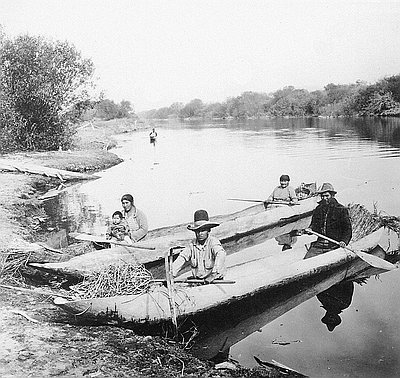
Klamath and Modoc Indians, 1860
U.S. Army Lt. Lorenzo Lorain took this photograph of a group of Klamath and Modoc Indians in the summer or fall of 1860. The traditional territory of the …
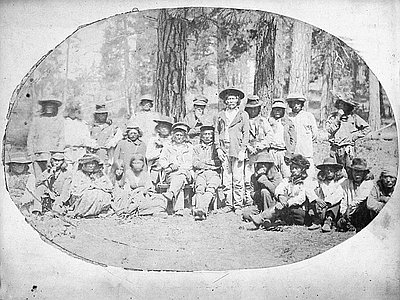
Kintpuash (Captain Jack)
Kintpuash (also spelled Keintpoos, Keiintoposes), better known as Captain Jack, was a Modoc Indian chief during the 1860s and early 1870s. In a desperate attempt to maintain his …
